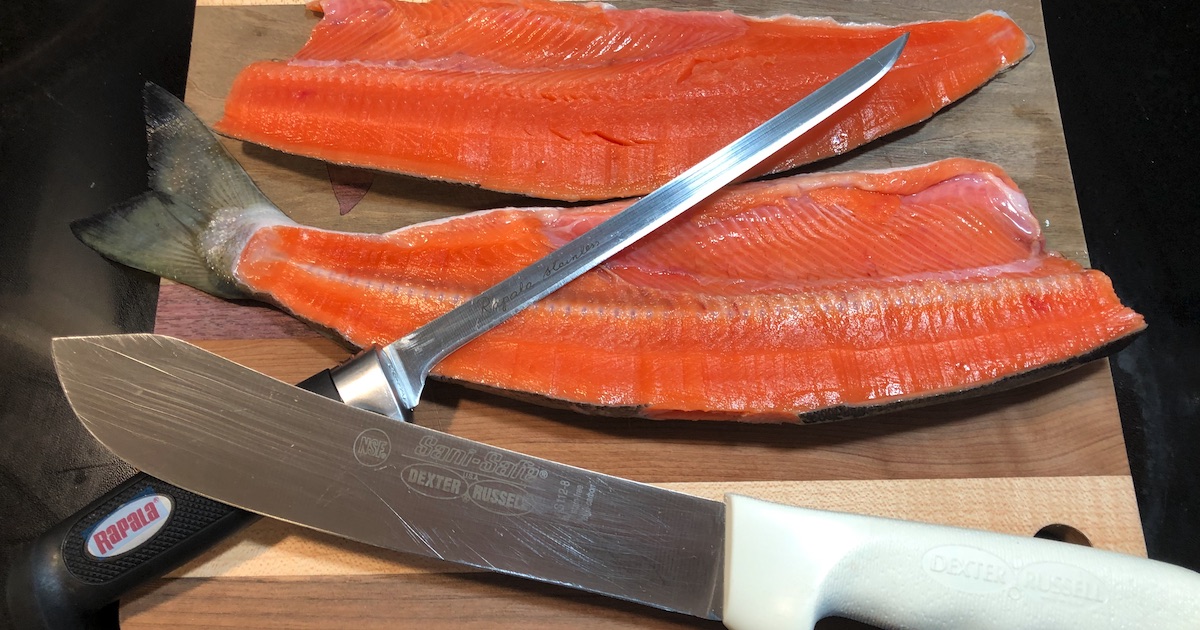
Whether you fish with a fly rod, a downrigger, or a gillnet, you will need a good knife. From cutting bait to trimming fishing line or processing your catch, a reliable knife is critical.
Most fishermen will need several knives for different purposes; using one general-purpose knife just won’t (pardon the pun) cut it. We’ll look at the three kinds of knives you should absolutely have: a utility knife for rough tasks on the boat, a heavy stiff-bladed butcher knife for slicing through bones, and a sharp flexible fillet knife for filleting fish. There are also more specialized knives, such as gutting knives or serrated rope cutting knives, that are typically seen on commercial fishing boats and are outside the scope of this article.
Utility Fishing Knives
For the average angler, choosing a utility knife is often a bit of an afterthought, but it’s the knife that will get the most use. It is intended for tasks such as cutting bait, slicing rope or fishing line and sometimes preparing snacks.
(I have learned that it is advisable to clean your bait knife thoroughly prior to preparing snacks unless you do not mind sandwiches with a hint of herring flavour.) A short, heavy-bladed knife made of corrosion-resistant steel will work best. As this knife will typically live on the back deck of the boat and be exposed to salt water, corrosion resistance takes precedence over a sharp cutting edge. Choosing the right balance between high-carbon sharp blades and highly corrosion-resistant but duller blades is always a challenge. More details on this dilemma will be covered below in the section on fillet knives.
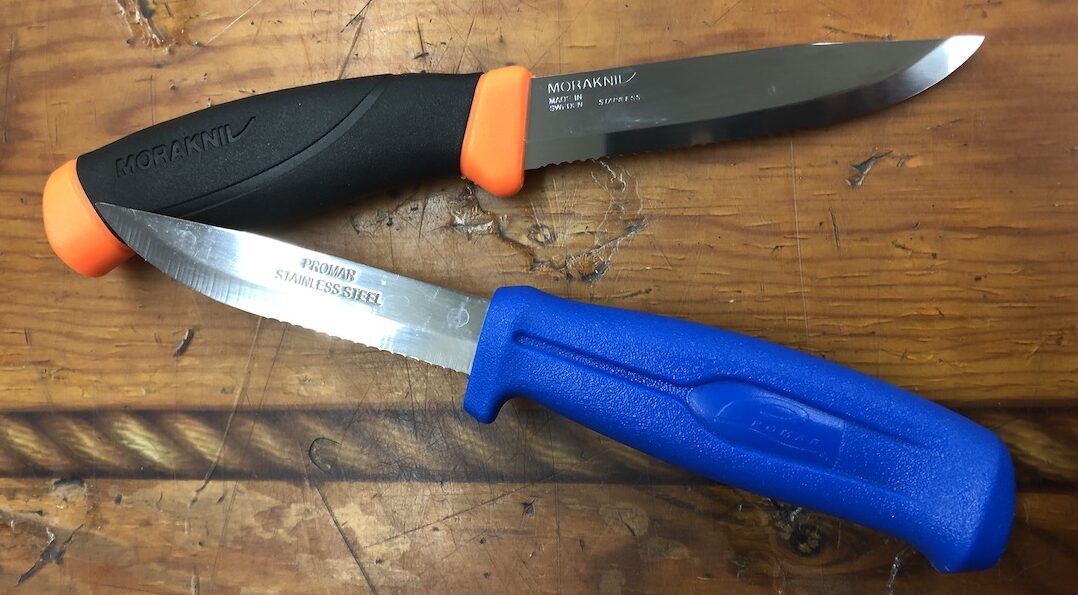
Utility Fishing Knives
Butcher Knives for Fishing
A heavy butcher knife isn’t often associated with fishing. However, unless you are just filleting all your catch, at some point you will have to cut through a fish’s spine. Even if it is just cutting the head and tail off a large salmon, a proper butcher knife is the best choice. Even after filleting a salmon, many fishermen chop the head and tail off in order to retain the spine for making salmon chowder. And if you are cutting salmon steaks, a large, stiff bladed butcher knife is critical. Using a thin fillet knife to do this is ineffective, and it will dull and possibly damage the blade.
When choosing the right butcher knife, consider where will it be stored. In order to comply with the rules around transporting your catch, often the final processing will be done at home. Keeping a butcher knife at home means it will not be exposed to the elements on a boat. Therefore, a sharp, high-carbon blade is the best choice.
Fillet Fishing Knives
When choosing the right fillet knife, the first consideration should be blade material. Probably we all have bought a cheap fillet knife and left it in our tackle box for a while, only to find it rusted when we need to use it. Therefore, corrosion resistance is critical, especially Granton Edge Knives: Viktorinox for use around salt water. Buying a stainless-steel knife may seem to be the answer, but they do not hold an edge very long. They do sharpen easily, so you could just sharpen them frequently. Alternatively, there are other options.
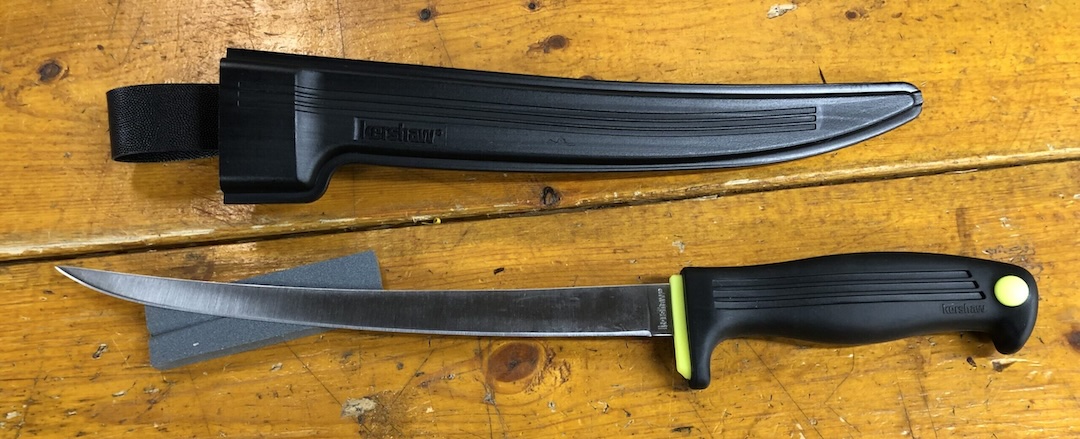
Long Fillet KnifeA high-carbon or chromium infused blade will stay sharper for much longer and cut fillets much better. The saltwater angler should therefore look for a quality chromium or carbon-infused stainless blade knife. A titanium oxide or Teflon-coated blade will also resist corrosion around the water.
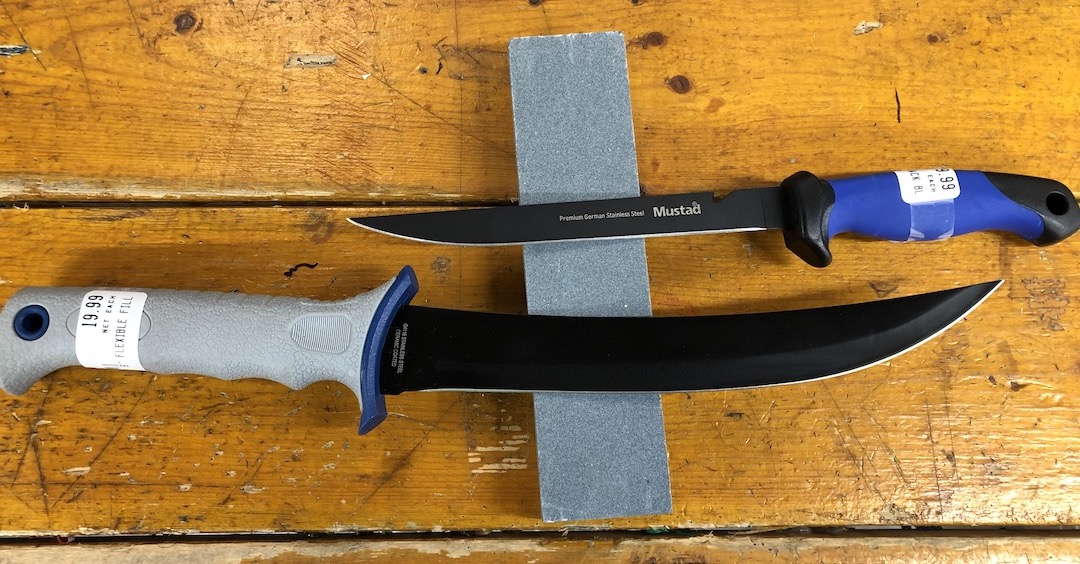
Titanium-oxide and Teflon coated knives
Unfortunately, the cutting edge of the blade is uncoated and will rust.

“Old Rusty”
Granton Edge Knives
An increasing number of new fillet and butcher knives feature oval hollows carved into the side of the blade. Knives with this feature are sometimes referred to as Granton Edge Blades, named for the Granton Knife company in Sheffield England. While this concept was patented way back in 1928, it is only now becoming more common outside professional kitchens and fish processors. These hollows break the surface tension when making thin slices of wet or clingy foods. Professional fish filleters and sushi chefs have used Granton edge knives for years. The downside is if you use and sharpen a knife long enough, you will eventually use up the cutting edge of the blade and reach the hollow. At this point the knife is no longer usable and should be replaced.
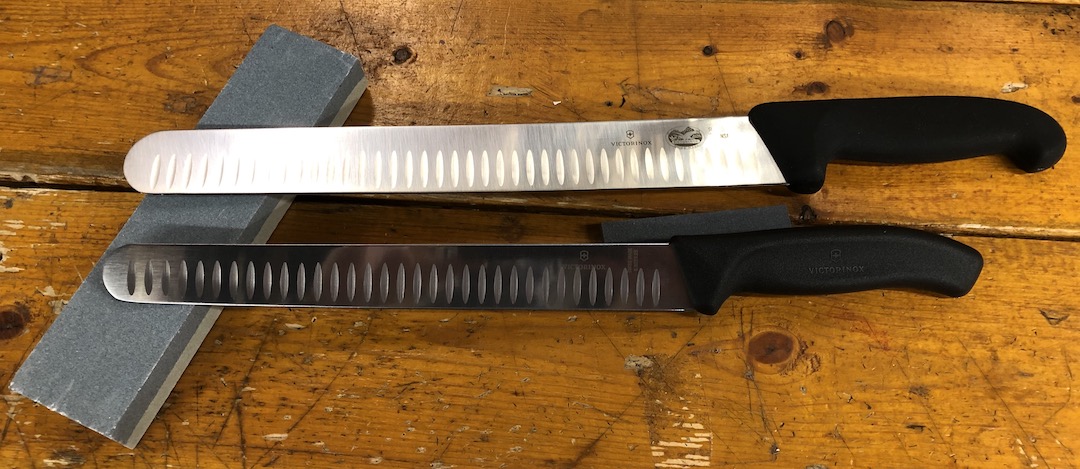
Granton Edge Knives
Fishing Knife Safety
Large sharp fishing knives are inherently dangerous, so some simple precautions should be made. Keep your knives sharp so they slice easily without undo force. Avoid rushing and have enough room for a clear, stable work surface. Limit alcohol intake until the job is done. And consider a cut-proof glove for your non-knife holding hand, especially if processing a large amount of meat.
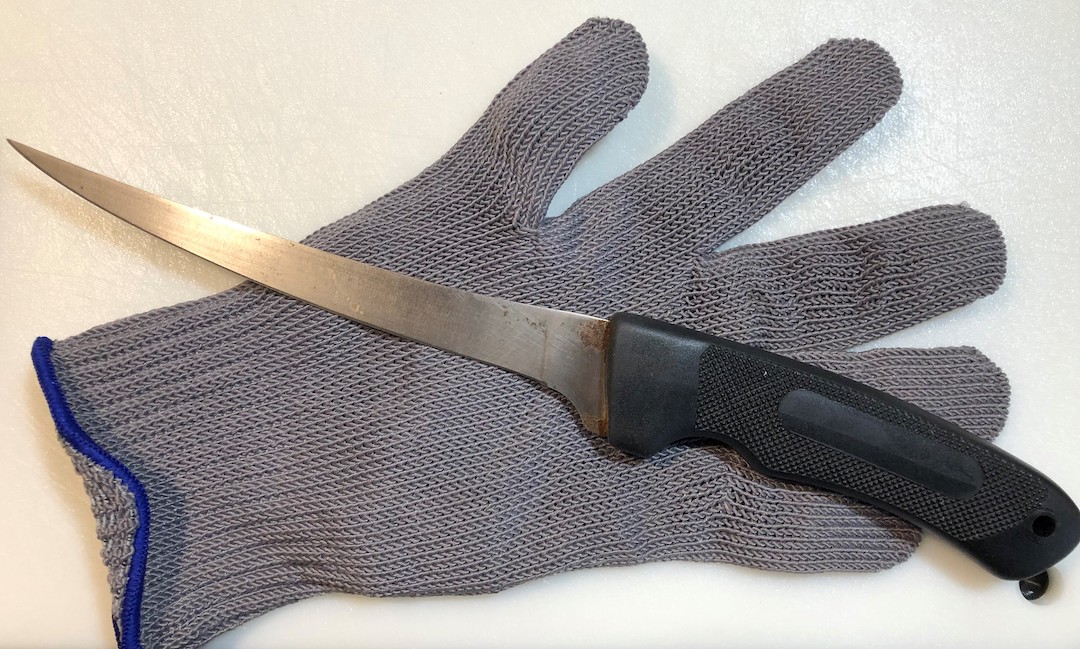
Cut Resistant Glove for Fishing
Most of my knife related accidents have occurred when rushing or tired. Prior to buying a cut-proof glove, I used to refer to my left index finger as my “knife stopping finger,” and it has a cross hatch of scars to prove it. I now often use a Victorinox cut-resistant glove on that hand, and I find it works well. There are other brands available, but I have found this one to be both effective and thin enough that it does not interfere with the task at hand.
So take the time to select the correct knife for the job you need done. A quality blade may cost a bit more than an inferior one, but it will pay for itself in the long run. Make sure to maintain it so it stays sharp and doesn’t corrode. And don’t be that guy at the cleaning station sawing though his prized catch with a dull, rusty knife. Rust flakes in fillets are not the best way to increase your iron intake, and they do not help with the flavour or presentation.
This article appeared in Island Fisherman magazine. Never miss another issue—subscribe today!
One Comment
Leave A Comment
Visit the Store
$34.99
$34.99
Featured Catch

Joel Unickow halibut (Photo: Rob Frawley Lucky Strike Sportfishing Tofino)









Picking a knife that comes with a spoon on the butt end of the handle is a must for scrapping blood lines.